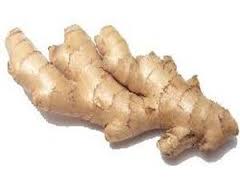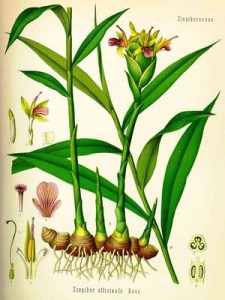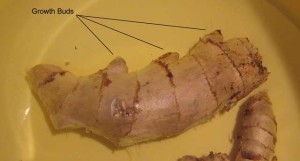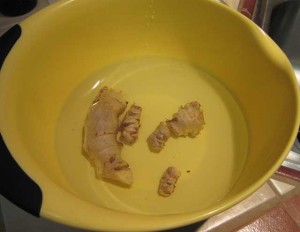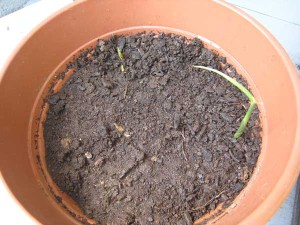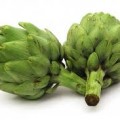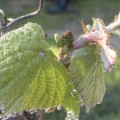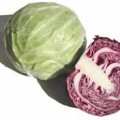Climate and Environmental Conditions:
Ginger is a tropical plant that likes a sheltered site with filtered sunlight, warm weather, and humidity, along with rich, moist soil. It does well in containers, so people can grow ginger in just about every zone. Avoid strong sun, windy areas, frost and soggy soil.
Obtaining Root Stock:
The best source of ginger to grow is from friends or neighbors that grow it themselves. Alternatively, early in the spring, or late winter, buy your seed stock from the grocery store. Look for plump, fresh rhizomes with lots of growth buds. Growth buds look like little horns on the root.
Timing:
Plant outside in the early spring or late winter, in rich, moist, well-draining soil. If you bought your rhizomes from the grocery store, soak them in water overnight. This rehydrates them and rinses off any growth retardant that might have been applied.
Indoors, you can start it at any time. Just don’t move it outside until it’s above 50 degrees F. Above 75 is even better, if you don’t want its growth stunted.
Planting:
Plant your rhizomes whole or break them into sections with at least two growth buds each. They should be 1″ to 3″ deep, with the eyes facing up. As for spacing, they can be planted quite closely: about 6″ to 8″ apart.
This is almost two months after planting the ginger rhizomes. If you look closely, you will see one very tall sprout to the right, two small sprouts at the top, and one sprout in the center of the pot.
Routine Maintenance:
Water:
Consistent moisture is required while they are growing. Don’t let the soil dry out, but avoid overwatering. They love humidity, so misting helps in dry areas.
Mulch:
Mulch thickly to make sure their soil doesn’t dry out and keep weeds away.
Weeding:
Ginger is a very slow-growing plant, so weeds can outcompete it easily. Mulch helps keep weeds down, but it still might need some help.
Fertilizing:
Add fresh compost each year when you are planting. If compost isn’t an option, feed it with slow-release organic fertilizer at planting, or use seaweed extract or fish emulsion every two weeks.
Pests & Diseases:
Spider Mite can be a problem in dry areas.
Harvest:
Parts to Harvest:
The rhizome (not the roots) are what we eat. They form after the leaves die back at the end of the warm season. Reducing water and letting the soil dry out encourages them to form their rhizomes.
Green Ginger is very young rhizomes. These can be harvested at about 4-months, but they are not as tasty as mature ginger. Just be careful when you dig it up – staying on the outside of the clump.
When to Harvest:
First year:
At the end of the summer, when temperatures start to fall, the leaves will start dying back. This is your cue to reduce watering and let the ground dry out around them. They will then start putting their energy into forming the rhizomes. When all the leaves have died back you can harvest the ginger. This takes about 8 months, from the time of planting. Dig up the whole plant and select a few rhizomes with some good growth buds to replant right away. They will remain dormant until the temperature gets above 75 degrees F.
However, if you can leave them alone for this first year or two, you will have a much more productive stand for the coming years. If this is your goal, then don’t dig them up at all the first year.
Mature plants:
The rhizomes of mature plants can be dug up whenever you need it. Mature rhizomes can be found toward the center of your clump. Since the new shoots radiate off of the central mature rhizome, it’s possible to harvest the mature rhizomes without disturbing the newer shoots.
Storing Ginger:
Fresh
Unpeeled ginger can be kept well in the crisper drawer in a ziploc bag for 8 weeks or longer.
in Alcohol
My favorite way of storing fresh ginger is in white wine. Just cut the rhizomes of ginger into 2″ to 3″ lengths (or whatever will fit in your jar) and cover completely with a good white wine. When you need some, just take out what you need and put the rest back. The wine gets infused with gingre and can be used in cooking for sauces or salad dressings. Not sure how long it lasts, but I just used the last bit of mine which was about 2 months old. There’s no taste from the wine in the ginger, that I could tell. I didn’t peel mine, but some recipes say to peel the ginger first. It remained crisp and flavorful.
Many different spirits can be used: vodka, brandy, dry sherry, sake, and rice wine. Fine Cooking did some tests on the different methods, with Vodka winning.
Dried
Dry fresh tubers outside, if your area is on the dry side. Some sites say to sun-dry it, but be careful of sunburn.
Frozen
Peel, chop & freeze. Seal tightly to avoid drying it out and freezer burn.

